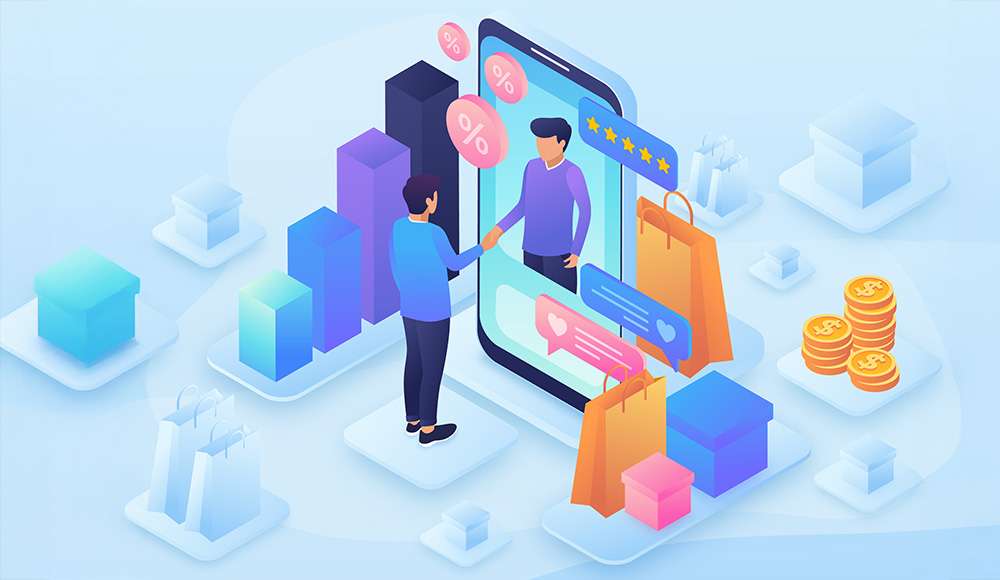
The world of B2B e-commerce is undergoing a massive transformation. Gone are the days of clunky, impersonal ordering systems. Today’s business buyers expect the same seamless, personalized, and customer-centric experience they enjoy as consumers. Recognizing this shift, Shopify has invested heavily in its B2B platform, offering a powerful suite of tools designed to help merchants cater to the unique needs of wholesale clients.
This post will take a deep dive into Shopify’s B2B capabilities and explore how you can leverage them to build personalized, customer-centric strategies that drive growth and foster long-term loyalty with your business buyers.
Hire a Shopify Developer
Centralized Management: A Single Platform for B2C and B2B
One of the most significant advantages of Shopify’s B2B offering is the ability to manage both your direct-to-consumer (D2C) and business-to-business (B2B) operations from a single, unified platform. This eliminates the need for separate systems and spreadsheets, which can be costly and inefficient.
With a centralized backend, you can:
-
Streamline Inventory Management: Track inventory across both sales channels in real-time, preventing stockouts and ensuring accurate data.
-
Unify Customer Data: Gain a holistic view of your customers, whether they’re individual consumers or large businesses. This allows for more effective marketing and relationship management.
-
Simplify Order Processing: Manage all your orders from one place, regardless of the sales channel. This reduces complexity and improves operational efficiency.
By bringing your B2B and B2C operations under one roof, you can reduce administrative overhead and focus on what matters most: growing your business.
Company Profiles: Tailoring the Experience for Each Business
B2B relationships are not one-size-fits-all. Different businesses have different needs, and Shopify’s “Companies” feature allows you to create unique profiles for each of your business customers. This is the foundation for a truly personalized experience.
Within a company profile, you can set up:
-
Multiple Locations and Contacts: Assign specific contacts and shipping locations to each company, making it easy for businesses to manage their purchasing across different branches or departments.
-
Custom Payment Terms: Offer flexible payment options, such as net 30, net 60, or net 90, to accommodate the procurement processes of your business buyers. This is a crucial feature for building trust and securing large orders.
-
Tax Exemptions: For businesses that qualify for tax exemptions, you can easily configure their profiles to reflect this status, ensuring accurate and compliant invoicing.
In the B2B world, many transactions are exempt from sales tax. This is common for resellers who buy goods to sell to their own customers, or for certain organizations like government agencies and non-profits. Handling these exemptions correctly is crucial for legal compliance and for maintaining good relationships with your business customers. Shopify’s B2B platform provides specific tools to manage this process smoothly.
By using company profiles, you can move beyond generic transactions and build a tailored purchasing experience that reflects the unique relationship you have with each business customer.
Custom Price Lists and Product Catalogs
In B2B e-commerce, the ability to offer differentiated pricing and product selections is not just a perk—it’s a necessity. This is where Shopify’s catalogs feature shines, allowing you to create highly personalized buying experiences for each of your wholesale customers. A catalog in Shopify B2B is essentially a combination of two key elements: a curated list of products and a specific set of prices assigned to them.
Here’s a more detailed look at how you can leverage these tools:
Offer Wholesale Pricing with Custom Price Lists:
A price list allows you to define exactly what a specific business customer pays for your products. This goes far beyond a simple store-wide sale. Shopify’s B2B platform gives you granular control over your pricing strategy, enabling you to:
-
Set Fixed Prices: For certain products, you may have a fixed wholesale price that you offer to all your B2B clients, or a unique price for a specific high-volume partner. You can set these prices on a per-variant basis, ensuring complete accuracy.
-
Apply Percentage-Based Discounts: A common approach is to offer a percentage discount off your standard retail prices. With Shopify, you can apply a global percentage discount to an entire catalog. For example, you can create a “Silver Tier” price list that gives a 20% discount on all products and assign it to the relevant company profiles.
-
Import and Export Pricing via CSV: For merchants with large and complex product catalogs, manually setting thousands of prices is not feasible. Shopify allows you to export your product list as a CSV file, enter the custom prices in a spreadsheet, and then re-import it to update the price list in bulk. This is a massive time-saver for managing extensive pricing rules.
Curate Product Selections with Catalogs:
Not every B2B customer should see every product you sell. You might have exclusive product lines for certain partners, or you may want to hide retail-only items from your wholesale buyers. Catalogs give you precise control over product visibility.
-
Create Tailored Product Assortments: When creating a catalog, you can choose to include all products from your store or select specific products and collections. This means you can create a unique product catalog for a single business customer or a group of customers. For instance, you could create a “West Coast Collection” catalog for your distributors in California, featuring products that are popular in that region.
-
Product Publishing Control: By assigning a specific catalog to a company, you ensure that when buyers from that company log in, they only see the products you’ve made available to them. This creates a clean, relevant, and personalized browsing experience, free from the clutter of irrelevant items.
Implement Quantity-Based Pricing (Volume Breaks):
To encourage larger orders, you can set up quantity rules, also known as volume-based pricing or price breaks. This powerful feature allows you to offer tiered discounts based on the number of units a customer purchases.
-
Set Minimum and Maximum Order Quantities: You can enforce rules such as a minimum order quantity for a specific product before the wholesale price is applied.
-
Create Tiered Discounts: For a single product, you can set up multiple pricing tiers. For example:
- Buy 1-9 units at $10 each.
- Buy 10-49 units at $9 each.
- Buy 50+ units at $8 each.
This is all handled within the price list, and the discounts are automatically applied in the cart as the buyer adjusts the quantity, providing instant feedback and incentivizing them to increase their order size.
The Self-Serve Wholesale Portal: Empowering Your Business Buyers
The modern B2B buyer is self-sufficient and expects the same level of convenience and autonomy they get from B2C e-commerce sites. Shopify’s self-serve wholesale portal is a secure, password-protected storefront that is dynamically personalized for each business customer. When a buyer logs in, the entire store transforms to reflect their specific pricing, products, and payment terms.
Place and Manage Orders Independently:
The portal is designed to make the reordering process as frictionless as possible, freeing your sales team from manual data entry.
-
Personalized Browsing and Checkout: Once logged in, the buyer sees their assigned catalog and custom pricing. The entire experience, from browsing to checkout, is tailored to them. They can add items to their cart, and their negotiated pricing and payment terms (e.g., Net 30) are automatically available at checkout.
-
Draft Orders and Purchase Orders: The portal allows buyers to create purchase orders directly within their account. These orders then appear in your Shopify admin as drafts, which you can review, approve, and convert into official orders for invoicing and fulfillment. This streamlines the procurement process for businesses that require formal purchase orders.
-
Quick Order Forms and Reordering: Many B2B apps and themes offer features like quick order forms or “linesheets,” where buyers who already know what they want can simply enter SKUs and quantities for rapid bulk ordering.
Review Order History and Shipment Tracking:
B2B relationships are long-term, and buyers frequently need to reference their past purchases.
-
Complete Order History: The customer account dashboard provides a full history of all past orders. This allows buyers to easily look up previous purchases, check prices they paid, and reorder frequently needed items with a single click.
-
Shipment Tracking: Just like in a B2C store, once an order is fulfilled, the buyer can track its shipment status directly from their account portal, providing transparency and reducing “Where is my order?” inquiries.
Manage Their Own Company Account:
Empowering buyers to manage their own information reduces administrative work for your team and gives the customer a sense of control.
-
Contact and Location Management: For larger businesses with multiple buyers or shipping addresses, the main contact for the company can add, edit, or remove associated buyers and their permissions. They can also manage the list of approved shipping locations, ensuring orders are always sent to the right place.
-
Payment Information: Buyers can securely manage their payment methods, including vaulted credit cards, making checkout even faster for future orders.
By providing a self-serve portal, you not only improve the customer experience but also free up your sales team from manual order entry, allowing them to focus on building relationships and acquiring new business.
Automating Manual Tasks with Shopify Flow
Efficiency is critical in B2B, and Shopify Flow, an e-commerce automation tool, is your secret weapon. With Flow, you can automate a wide range of manual tasks, reducing errors and saving valuable time.
-
Tagging New B2B Orders: Automatically tag incoming B2B orders for easy identification and fulfillment.
-
Notifying Sales Reps: Send automated notifications to the relevant sales representative when one of their assigned companies places an order.
-
Segmenting Customers: Create workflows that automatically segment your business customers based on their order history, location, or total spend, allowing for more targeted marketing campaigns.
By automating these and other repetitive tasks, you can create a more streamlined and scalable B2B operation.
The future of B2B e-commerce is customer-centric, and with its robust suite of B2B features, Shopify provides a powerful platform for merchants looking to deliver a world-class wholesale experience. By leveraging these tools to create personalized, efficient, and self-serve purchasing journeys, you can not only meet the expectations of modern business buyers but exceed them, paving the way for sustainable growth and long-lasting partnerships.













